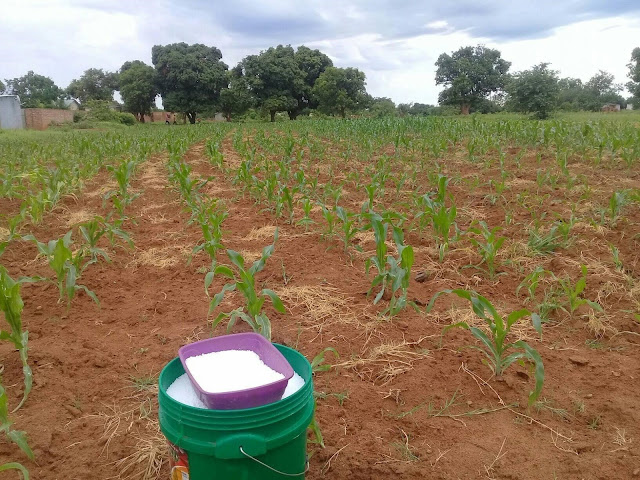To grow healthy crops full of nutrients, farmers need to ensure they have healthy soil. Without fertilizers, nature struggles to replenish the nutrients in the soil.
When crops are harvested, important nutrients are removed from the
soil, because they follow the crop and end up at the dinner table. If the soil
is not replenished with nutrients through fertilizing, crop yields will
deteriorate over time.
Careful analysing and fertilizing of crops enables a chain that
provides humans with nutritional food:
- The nutrients feed the soil
- The soil feeds the plants
- Plants feed animals and
people
The three most common mineral fertilizers are those based on
nitrogen, phosphorus and potassium.
The International Fertilizer Association (IFA) estimate that 85% of
the soils globally are deficient in nitrogen. 73% of the soils are deficient in
phosphorus, whereas 55% lack potassium.
What is fertilizer
used for?
Often, the plants have few possibilities to avoid nutrient deficiencies without the help of fertilizers.
Research trials: Without the
extra addition of nutrients from fertilizers into the soil, many plants have
few possibilities to avoid deficiencies. Take nitrogen for example, since
plants are not capable of absorbing it from the air directly, the soil is their
only means of acquiring this important nutrient. If the soil is low on
nitrogen, fertilizers are needed to boost nutritional levels.
Large concentrations of potassium sources occur deep below the soil
surface (often around one kilometre) and are far beyond the reach of plant
roots. Mining of potassium brings this naturally occurring nutrient to the soil
surface and within the grasp of plant roots.
Phosphorus exists in certain rocks, but for plants to access this
nutrient, it needs to be water soluble. The correct use of phosphorus
fertilizers helps plants absorb it through the soil and ensures a high
production and rapid growth.
What is the
difference between mineral fertilizers and organic fertilizers?
In nature there are 17 nutrients necessary for plants to thrive.
What kind of fertilizer you need, depends on what crop you grow and the
nutrient deficits in each specific soil. Different crops remove different
amounts of nutrients from the soil.
Many farmers use NPK compound fertilizers that provide a combination
of several nutrients at the same time.
Organic fertilizers such as animal waste and compost have been used
for centuries and are a valuable source of nutrients and organic matter, which
enhances soil structure.
But since the 20th century, mineral fertilizers have been
required to meet the increasing food requirements of a growing world
population. The amounts of nutrients in organic fertilizers vary and are much
less concentrated than those in mineral fertilizers.
Mineral fertilizers reduce the amount needed and the number of
vehicles to transport the fertilizing products. By 2050, the global population
is estimated to reach 9.8 billion, according to the United Nations. Increasing
crop yields is essential if we are going to be able to produce enough food for
everyone.
This increase is not possible without careful planned fertilizing.
Knowing the exact amounts of nutrients in the mineral fertilizer
also makes it easier to plan the farming process. Fertilizers containing major,
secondary and micronutrients are now more widely available to farmers.
Mineral fertilizers mostly come in a convenient solid granular form,
which makes them well suited to transport and apply by the farmer. Plants that
grow in nutritionally deficient and unfertilized soil will often be smaller and
grow slower than plants from healthy soil.
Why are nutrients important to humans?
When we eat wheat, apples, potatoes or other plants, the nutrients
from the fertilized soil is transferred to our bodies. The same happens if we
eat animals which have eaten plants with the same nutrients.
Fertilizers
make healthy soil: The calcium from the soil is taken up by the cows when
they graze, and then transferred to humans when we drink their milk. For
example, milk is a good supply of calcium, which prevents us from developing
weak and brittle bones. But the milk will not contain as much calcium if the
cows do not graze on fields with enough of this nutrient in the soil.
Growing food in soil with a good balance of nutrients is therefore
key to preventing malnourishment. It also prevents illnesses related to
deficiencies in populations across the world.
One example is Finland, where the government has mandated the addition of selenium to all multi-nutrient fertilizers since 1984. In this way, they have managed to combat heart disease in the population with great success.



Comments
Post a Comment